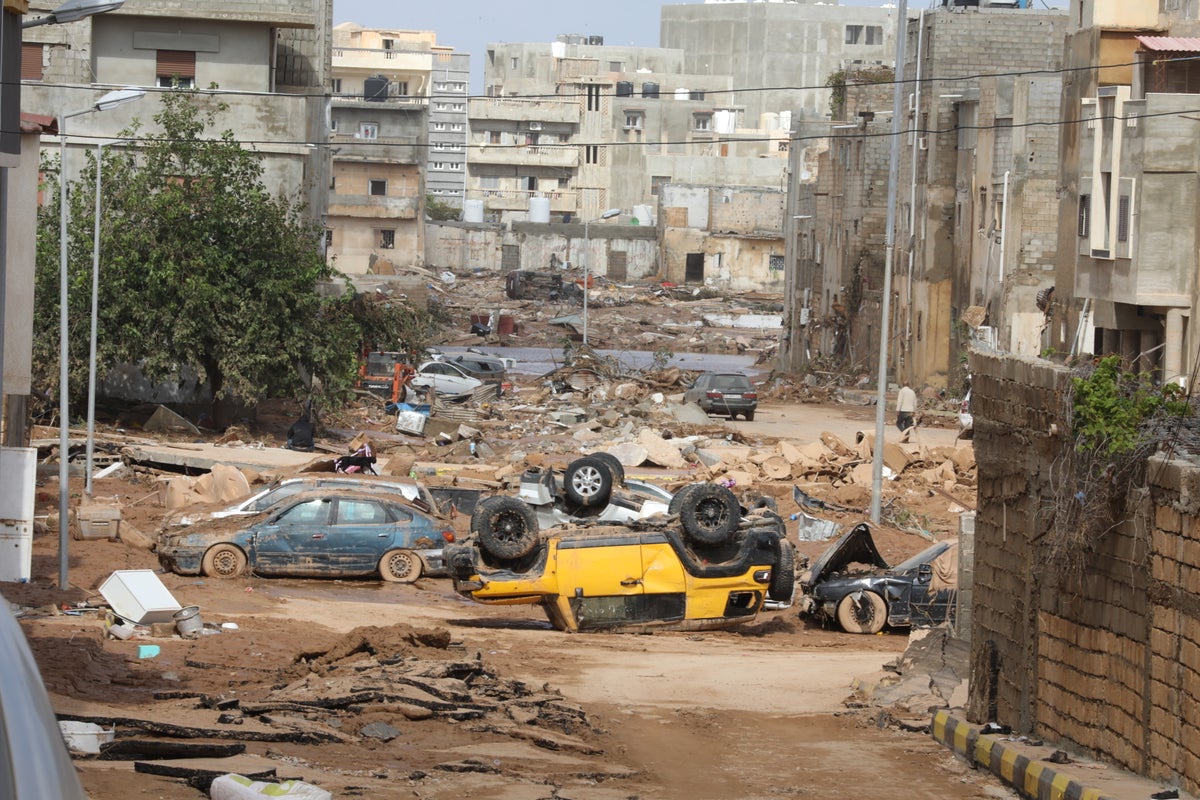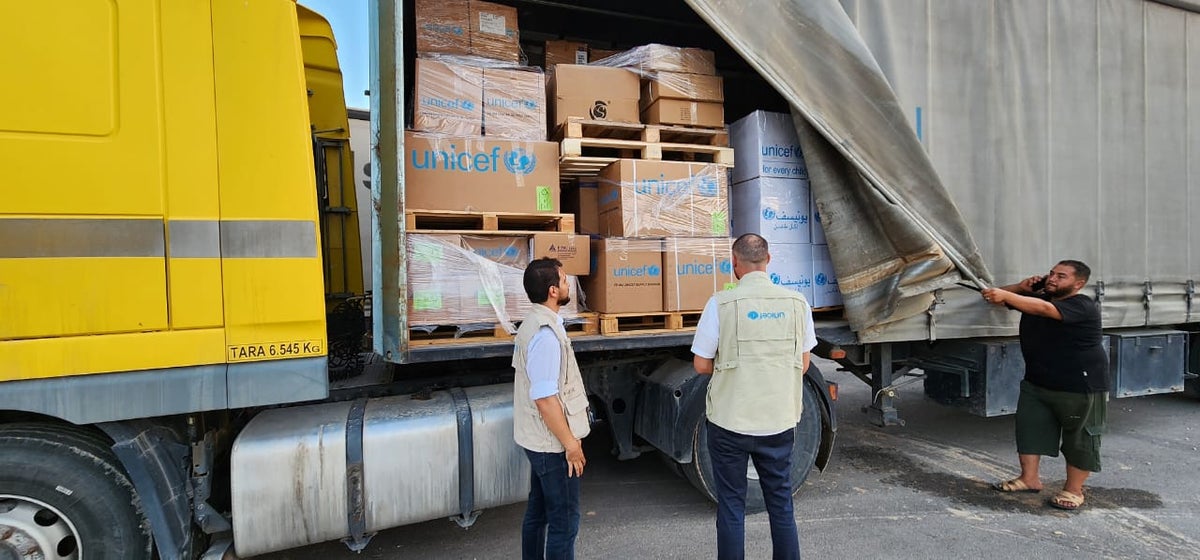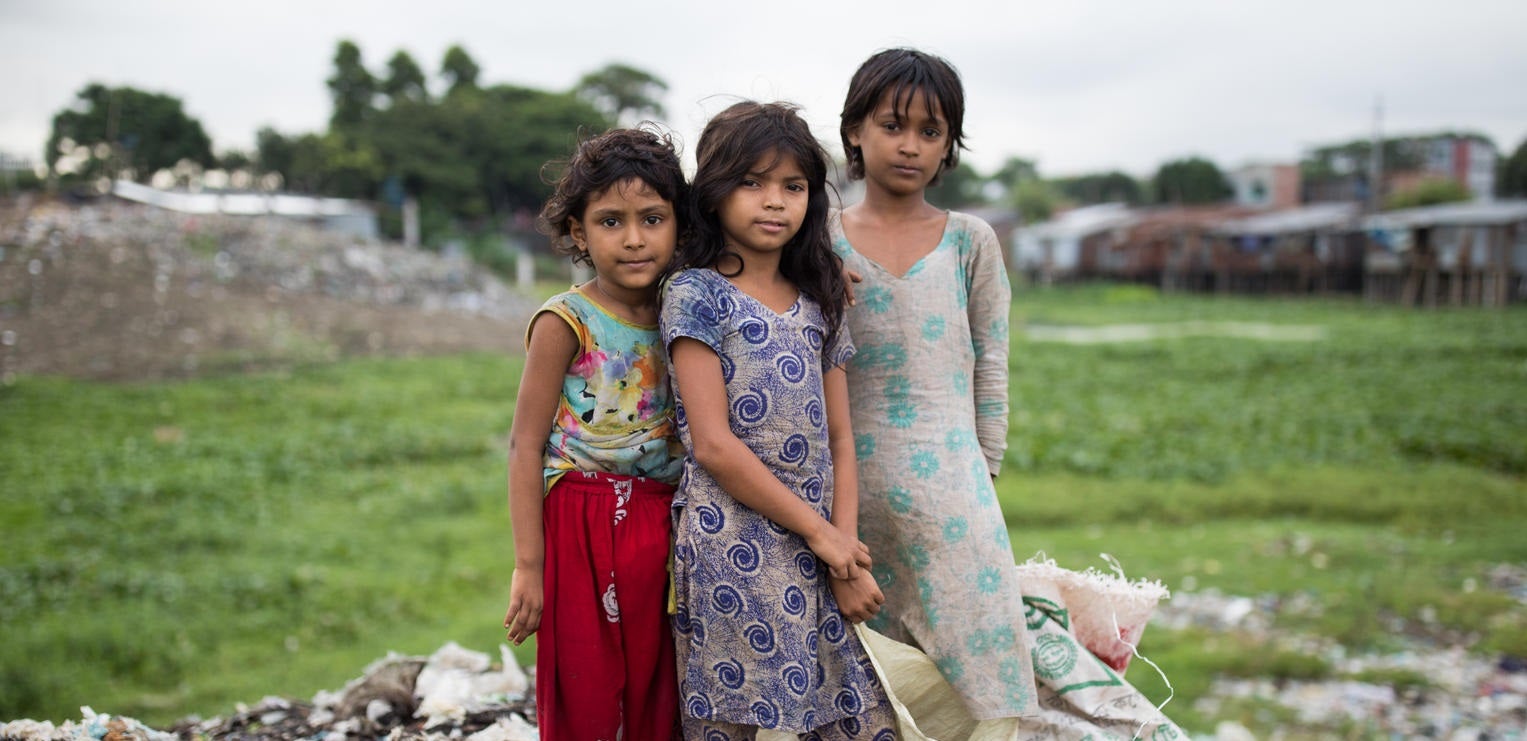Nearly 300,000 children are estimated to have been exposed to the powerful Storm Daniel across eastern Libya and a growing number of children and families are in desperate need of humanitarian assistance, following significant damage to numerous homes, hospitals, schools, and other essential infrastructure.

Immense devastation unleashed across eastern Libya
Storm Daniel unleashed havoc across eastern Libya on Sunday, bursting dams and destroying buildings in many towns, but particularly in Al Bayda, Al Marj and in the coastal city of Derna. Derna, a town of about 90,000 people, was already severely affected by conflict and its path to recovery is now set back years given the immense devastation.
Hundreds still missing as death toll climbs
Storm Daniel has reportedly claimed the lives of more than 5,000 people, with several hundreds more still missing. At least 30,000 internally displaced persons, sheltered in schools and many areas, remain cut off and inaccessible. At least three hospitals are currently out of service, and at least ten primary health care centers are flooded.
To prevent a catastrophe, we can’t afford to lose any time
UNICEF Representative in Libya Michele Servadei is currently visiting the areas affected by the floods and said the children of Libya are yet again facing another tragedy after over a decade of conflict.
"The children of Libya are facing yet again another tragedy after over a decade of conflict. Our priority is to scale up life-saving assistance, in particular providing health and water and sanitation supplies, psychosocial support, family tracing and preventing water borne diseases. To prevent a catastrophe, we can’t afford to lose any time. We know from previous disasters across the globe that the aftermath of floods is often more deadly for children than the extreme weather event itself. Children are among the most vulnerable and are at high risk of disease outbreaks, lack of safe drinking water, malnutrition, disruption in learning, and violence."
Floods pose a severe risk to children’s health and safety
Beyond the immediate risks of death and injury, the floods in Libya pose a severe risk to children’s health and safety. With compromised safe water supplies, the chance of diarrhoea and cholera outbreaks, as well as dehydration and malnutrition, increase significantly. Meanwhile, children who lose their parents or become separated from their families are more exposed to protection risks, including violence and exploitation.
UNICEF has been supporting Libya for almost 70 years
UNICEF has been actively supporting the children in Libya since 1957 and has mobilized vital supplies to support the immediate humanitarian response. These include essential medical supplies for 10,000 people, 1,100 hygiene kits, water treatment materials, as well as clothing kits for 500 children.

Immediate priorities include safe drinking water and medical supplies
UNICEF requires at least US$6.5 million for urgent lifesaving interventions and stands ready to support children and families in need of humanitarian aid in Al Bayda, Al Marj, Benghazi, Derna and other affected areas. The immediate priorities are safe drinking water, medical supplies and mobile health teams, psychosocial support and family tracing.
Full extent to become clearer in the coming days
The full extent of humanitarian assistance will become clearer in the coming days as assessments on the ground continue and UNICEF stands ready to engage with authorities on the recovery and reconstruction phase, in particular for health, water and education facilities.


